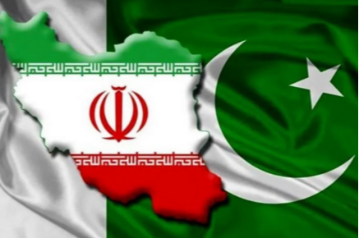A series of recent reports have given the impression that India is ending its oil hunt in the South China Sea. Some have suggested that ONGC Videsh Ltd is withdrawing from the contested waters of the South China Sea under political pressure from Beijing.
China indeed claims almost all of the South China Sea as its territory and has routinely cautioned all foreign oil companies against exploration and drilling for hydrocarbons. If Beijing’s assertiveness in the South China Sea is real, Delhi is not about to flee its contested waters.
India, to be sure, is preparing to give up one of the blocks it has been drilling in. But it has no intention of abandoning its search for oil and natural gas in the South China Sea.
OVL has assessed that the prospects for finding oil in Block 128, which it acquired from Vietnam in 2006, are limited. OVL had invested about $50 million in exploring Block 128 until last year.
The decision to end further investment in this block is a "technical" one, official Delhi says. It points to the fact that OVL had earlier given up the quest for oil in the adjacent Block 127 after declaring it "dry".
Meanwhile, OVL’s investment in the Lan Tay field in Block 06.1 off the southern coast of Vietnam in the South China Sea remains a profitable one. The field, owned by OVL, PetroVietnam and British Petroleum, has been producing hydrocarbons since 2003.
Meanwhile the Lan Do field in the same block, where OVL has a share, is expected to begin production this year. Delhi insists that comprehensive cooperation with Vietnam, along the full value chain of hydrocarbon development, will continue.
OPEN SEA LANES
The search for petroleum is only one of India’s many interests in the South China Sea. Equally strategic for India is the objective of keeping open the sea lines of communication (SLOCs) in the South China Sea.
As India’s trade with East Asia grows rapidly, the waters of the South China Sea, which connect the Indian and Pacific Oceans, have acquired a new salience for India’s economic security.
Any conflict in South China Sea that might constrict international shipping is of direct concern to India. Amidst rising tension between Beijing and its maritime neighbours in recent years, Delhi has begun to take greater interest in the affairs of the South China Sea.
India has repeatedly reaffirmed its interest in ensuring the freedom of navigation in the South China Sea. India does not take a position on the maritime territorial disputes between China and other Southeast Asian countries. Delhi wants a peaceful resolution of these disputes in accordance with the well-established norms of the international law of the sea.
As military tension between China and the Philippines ratcheted up, Delhi stepped in last week. In a rare statement, the spokesman of the foreign office in Delhi said, "Maintenance of peace and security in the region is of vital interest to the international community". He urged "both countries to exercise restraint and resolve the issue diplomatically according to principles of international law."
NAVAL DIPLOMACY
In the past, conflicts in South China Sea would seem distant to Delhi. As India becomes a trading nation and sees the waters of the South China Sea as critical for its own well being, Delhi has stepped up its engagement with the region.
The Indian navy has become one of the important instruments of Delhi’s current outreach to the South China Sea. Since its first foray into the South China Sea in 2000, Delhi has frequently dispatched its warships into the western pacific to conduct naval diplomacy with the littoral states.
This month, a squadron of four ships has set sail on a long range deployment to the east, and will pass through the Malacca straits and the South China Sea. It will make port calls in Malaysia, Singapore, and the Philippines.
The squadron is expected to conduct the first-ever joint exercise with the Japanese navy. It will also make a port call to Shanghai as part of the plans to expand maritime interaction with China.
Irrespective of the decision to return Block 128 to Vietnam, the South China Sea is now an integral part of India’s security perimeter.
(The writer is a Distinguished Fellow at Observer Research Foundation, Delhi)
Courtesy: The Indian Express, May 16, 2012
The views expressed above belong to the author(s). ORF research and analyses now available on Telegram! Click here to access our curated content — blogs, longforms and interviews.




 PREV
PREV

